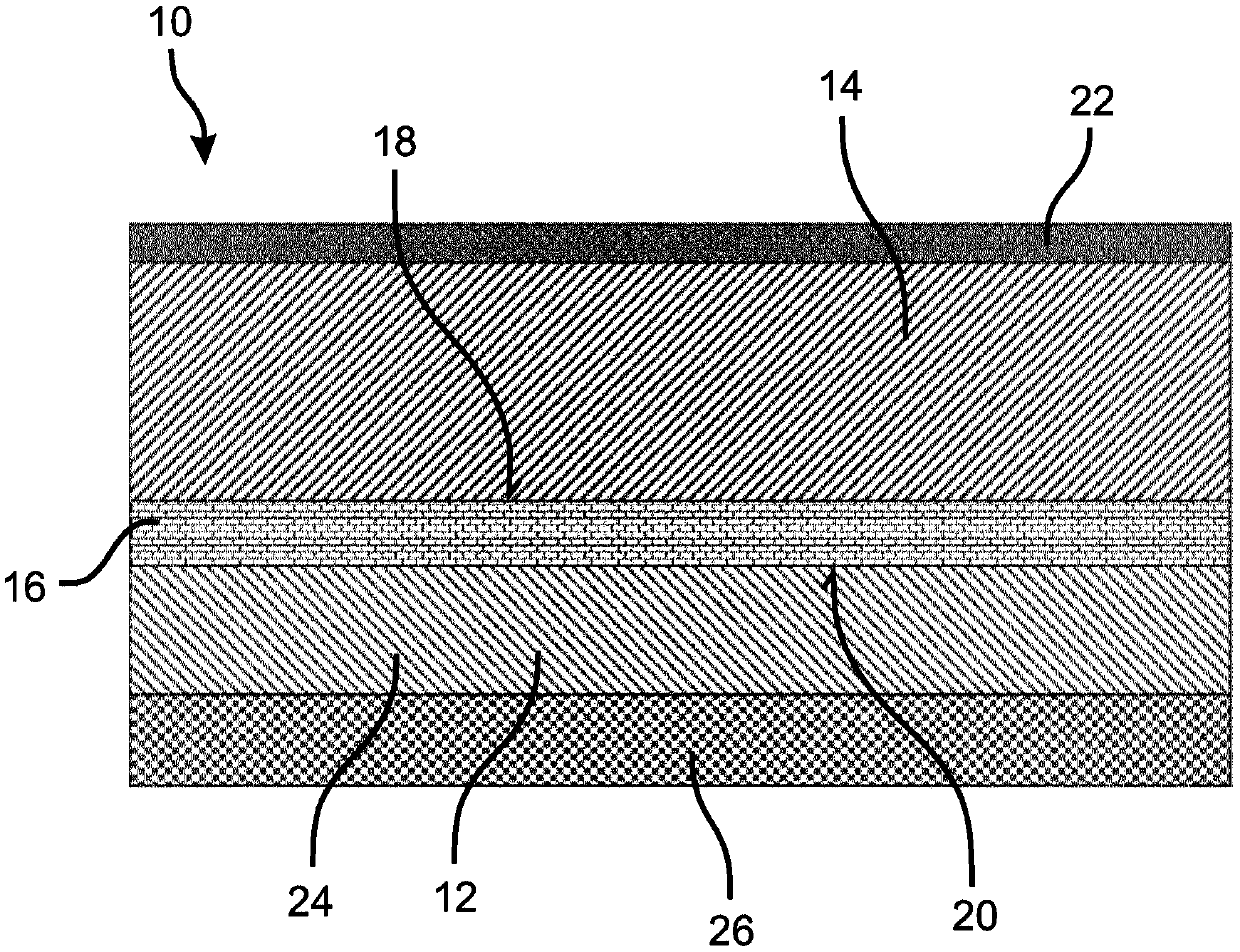Method for Producing an Electrochemical Cell Comprising a Lithium Electrode, and Electrochemical Cell
A battery cell, electrochemical technology, applied in electrode manufacturing, lithium storage battery, electrode melt processing, etc., can solve the problems of high risk of liquid electrolyte, theoretical potential limitation of anode and cathode active materials, etc., to achieve less oiling or mechanical Defects, punchability improvement, effect of life improvement
- Summary
- Abstract
- Description
- Claims
- Application Information
AI Technical Summary
Problems solved by technology
Method used
Image
Examples
Embodiment Construction
[0034] exist figure 1 The electrochemical cell 10 of the solid-state battery shown in FIG. 2 includes a negative electrode 12 , a positive electrode 14 , and a lithium-ion-conducting solid electrolyte 16 disposed between the negative electrode 12 and the positive electrode 14 . Negative electrode 12 and positive electrode 14 are disposed on opposite surfaces 18 , 20 of solid electrolyte 16 .
[0035] The solid electrolyte preferably consists of an oxidized or sulfided lithium ion conductor. As the active material for the positive electrode 14 it is preferable to use semimetal oxides such as Li(Ni 1 / 3 co 1 / 3 mn 1 / 3 )O 2 or conversion materials such as FeF 3 . The electrical conductor 22 arranged on the positive electrode 14 preferably consists of aluminum.
[0036] Negative electrode 12 comprises a layer 24 of metallic lithium which directly adjoins solid electrolyte 16 . It is preferable to use high-purity metallic lithium with a purity in the range of 99.8 to 99.9%. ...
PUM
| Property | Measurement | Unit |
|---|---|---|
| thickness | aaaaa | aaaaa |
| thickness | aaaaa | aaaaa |
| thickness | aaaaa | aaaaa |
Abstract
Description
Claims
Application Information
 Login to View More
Login to View More - R&D
- Intellectual Property
- Life Sciences
- Materials
- Tech Scout
- Unparalleled Data Quality
- Higher Quality Content
- 60% Fewer Hallucinations
Browse by: Latest US Patents, China's latest patents, Technical Efficacy Thesaurus, Application Domain, Technology Topic, Popular Technical Reports.
© 2025 PatSnap. All rights reserved.Legal|Privacy policy|Modern Slavery Act Transparency Statement|Sitemap|About US| Contact US: help@patsnap.com

